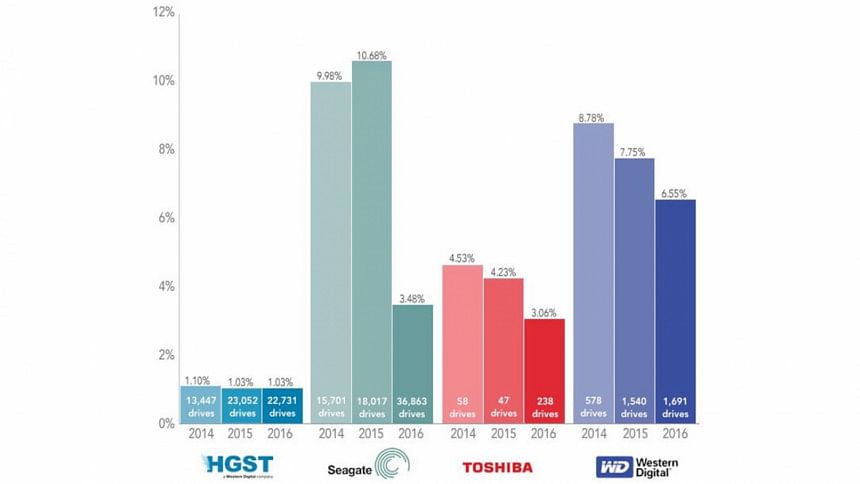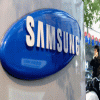Which brands of hard drive are most likely to fail?

Wondering how long your hard drive will last? According to research by data storage company Backblaze, the shelf life for an average drive is about four years.
The latest analysis by the company of more than 60, 000 hard drives, gives details on which brands of drive fail with greater frequency.
This is an independent data of one company that buys hard drives in bulk, and buys from the biggest players in the market and is not a sweeping investigation of every hard drive manufacturer on the market, according to popsci.com.
At first glance, hard drive technology seems to be improving. Year over year, the failure rate has been decreasing.
The largest improvement was by Seagate between 2015 and 2016, where the rate of failures dropped from 10.68 percent to 3.48 percent, more than half, reports popsci.com. (It's also worth noting that the sample size in 2016 also doubled from 18,017 drives to 36,863 drives.)
In terms of the hard drives that are most likely to fail, Backblaze's data outs Western Digital, which had a 2016 failure rate of 6.55 percent. Over 1,691 drives, about 110 failed.
The drives least likely to fail were made by HGST, a hard drive company owned by Western Digital that isn't targeted at a consumer market. HGST's drives also fail at a decreasing rate year over year, with a rate just over one percent.
Gleb Budman, Backblaze's CEO, describes the way hard drives fail as a bathtub curve. Hard drives usually fail at the beginning of their lifetimes or at around 4 years old. If they survive past a year, there's a good chance that they'll make it the expected lifespan, reports popsci.com.
Backblaze considers it a hard drive failure when the drive will no longer spin or connect to the computer's operating system, will not sync with other disks, or displays signs highly correlated with imminent failure.
Source: popsci.com

 For all latest news, follow The Daily Star's Google News channel.
For all latest news, follow The Daily Star's Google News channel. 








Comments